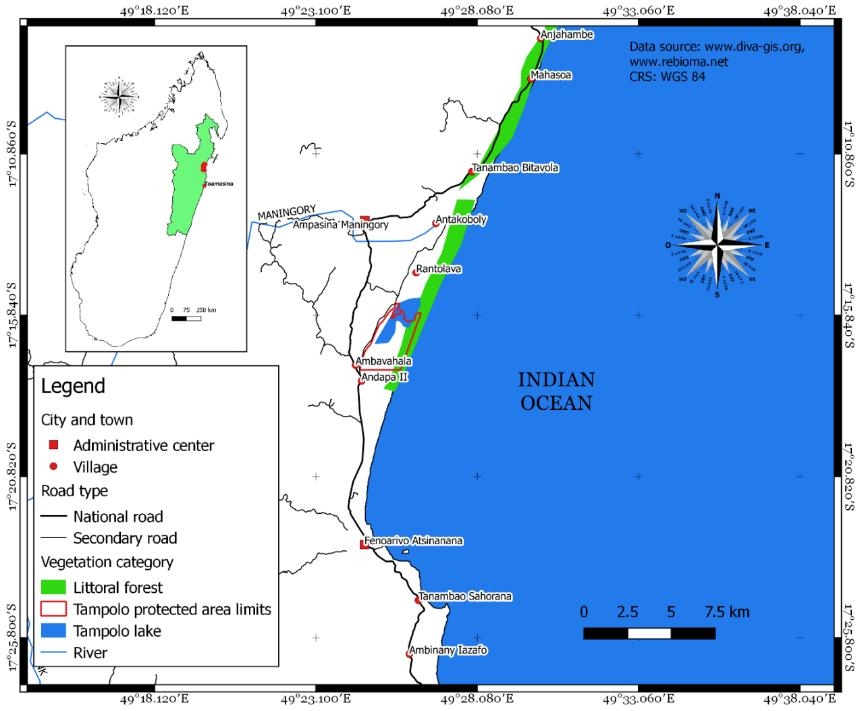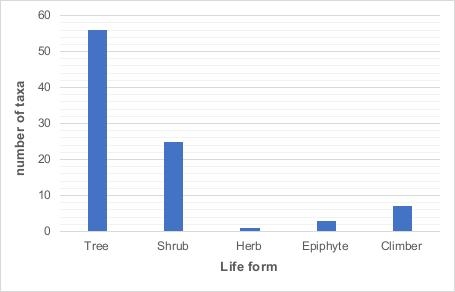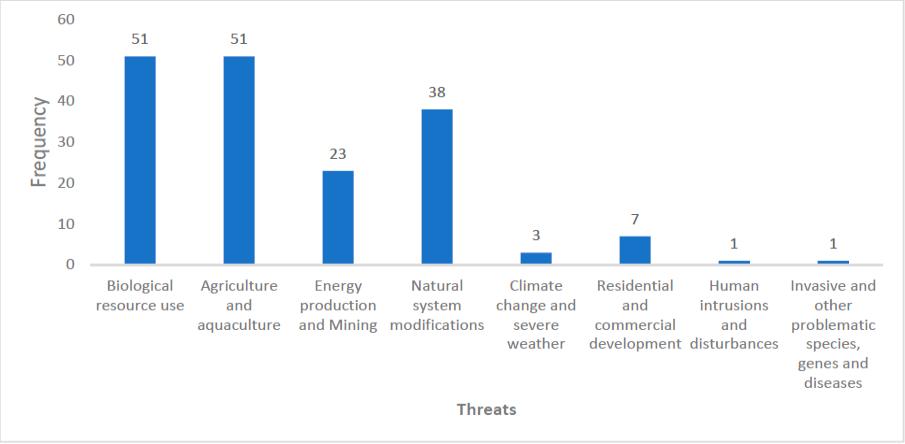Name:HU Guangwan
Tell:
Email:guangwanhu@wbgcas.cn
Organization:Wuhan Botanical Garden
Ethnobotanical Survey Conducted in Tampolo Forest in Northeastern Madagascar
2021-07-22
Tropical forests not only are important habitats for endangered plant and animal species, but also provide various ecosystem services, which are crucial for the local human population. Most global biodiversity hotspots are located in the tropics in developing countries, where human demographic pressure is exceptionally high. Deforestation driven by the increased land use change, natural resource overexploitation, and climate change has led to the rapid loss of the tropical forests.
Madagascar is home to about 14,000 plant species, out of 90% of which are endemic. The high degree of endemism is due to Madagascar’s long isolation following its separation from Africa and India’s land masses in the Mesozoic period.
Flora and Plant Taxonomy in Eastern Africa Research Group of Wuhan Botanical Garden, together with the Association de Valorisation de l’ Ethnopharmacologie en Régions Tropicales et Méditerra-néennes (AVERTEM), and the University of Lilles, France, surveyed the Floristic composition of Tampolo forest (Fenoarivo Atsinanana, Northeastern Madagascar) (Figure 1) to document the useful forest plants with emphasis on medicinal plants, which is useful in the conservation efforts in the region’s flora.
65 inhabitants between 25 and 75 years old were interviewed. 123 taxa were cited as useful in the locality, of which, 48% were used as medicine, 44% were timber and firewood, 8% were food (Figure 2). Among the useful plants, 92 taxa were exclusively from the forest and 31 were ruderal species. And medicinal plants were mostly used to cure stomachache (71%), fever (33.3%), and fatigue (25%), and leaves were the most frequently used parts (68%) that were used in the cure of most of the diseases (Figure 4). Phytochemical analyses revealed the presence of active secondary metabolites which have been linked to the treatment of various diseases in the 20 selected forest taxa.
Most of the taxa (41%) collected from Tampolo forest were of least concern in conservation status, and vulnerable species (VU) and near threatened (NT) recorded 11% and 8% respectively (Figure 5). Whereas, one taxa, Breonia madagascariensis A. Rich. ex DC. was recorded as critically endangered (CR).
Ethnobotany survey shows that the younger generations are ignorant about traditional medicinal plant uses. As the older generations are fading out, a hindrance of the cultural transfer is emerging. Most of the respondents derive their daily livelihood from the forest and the activities around it (i.e. alternative source of income). Hence, combining the social and natural sciences can be useful, which comes up with sustainable ways for the conservation of natural resources.
The research entitled “Ethnobotanical Survey in Tampolo Forest (Fenoarivo Atsinanana, Northeastern Madagascar)” was published in the journal of forests. This work was financially supported by the Association de Valorisation de l’Ethnopharmacologie en Régions Tropicales et Méditerranéennes, University of Lilles, France, and grants from National Natural Science Foundation of China and Sino-Africa Joint Research Center, CAS, China. Madagascan student Guy Eric Onjalalaina is the first author. Professor HU Guangwan is the corresponding author. Three Kenyan students Vincent Okelo Wanga, Elijah Mkala Mbandi and John Karichu Mwihaki also participated in the study together with other Madagascan Scientists.

Figure 1. Map of the study area: Location of Tampolo forest and the adjacent communities living around the forest (Image by WBG)

Figure 2. Graphic representation of the utilization of the plants (Image by WBG)

Figure 3. Distribution of taxa for each lifeform (Image by WBG)

Figure 4. Graphic representation of plant parts frequently used for treatment (Image by WBG)

Figure 5. The conservation status of the taxa collected from Tampolo forest basing on the IUCN database: LC- Least Concern; VU- Vulnerable; NT- Near Threatened; CR- Critically Endangered; EN- Endangered (Image by WBG)

Figure 6. The most recorded threats from the IUCN database of the plant taxa (Image by WBG)